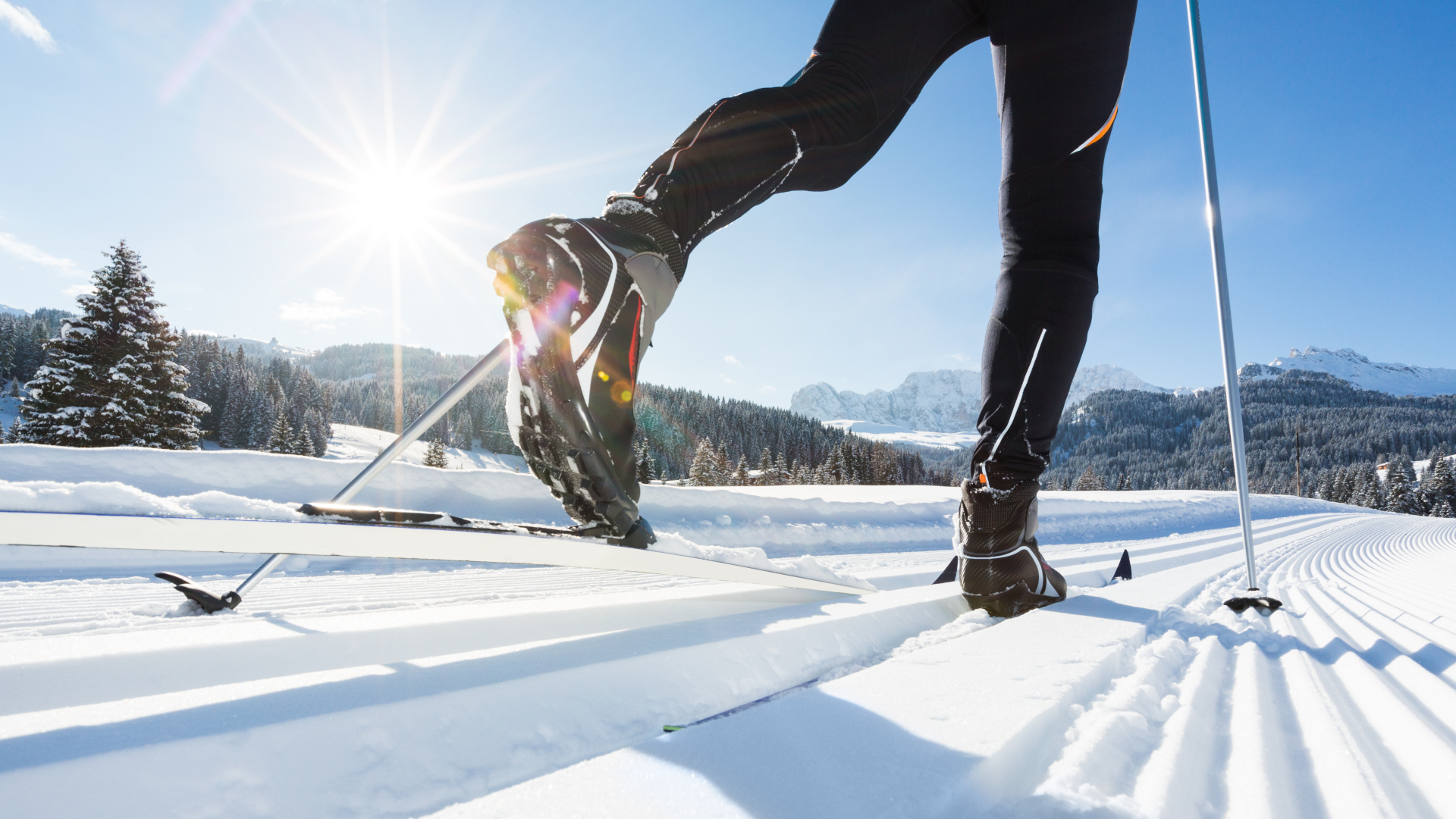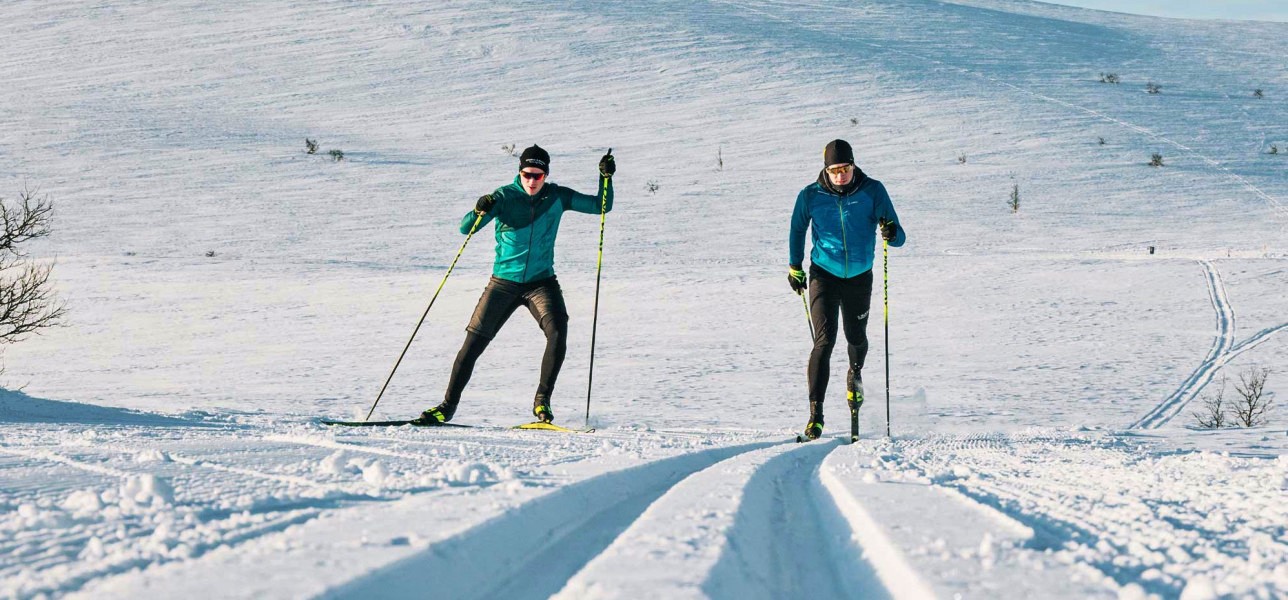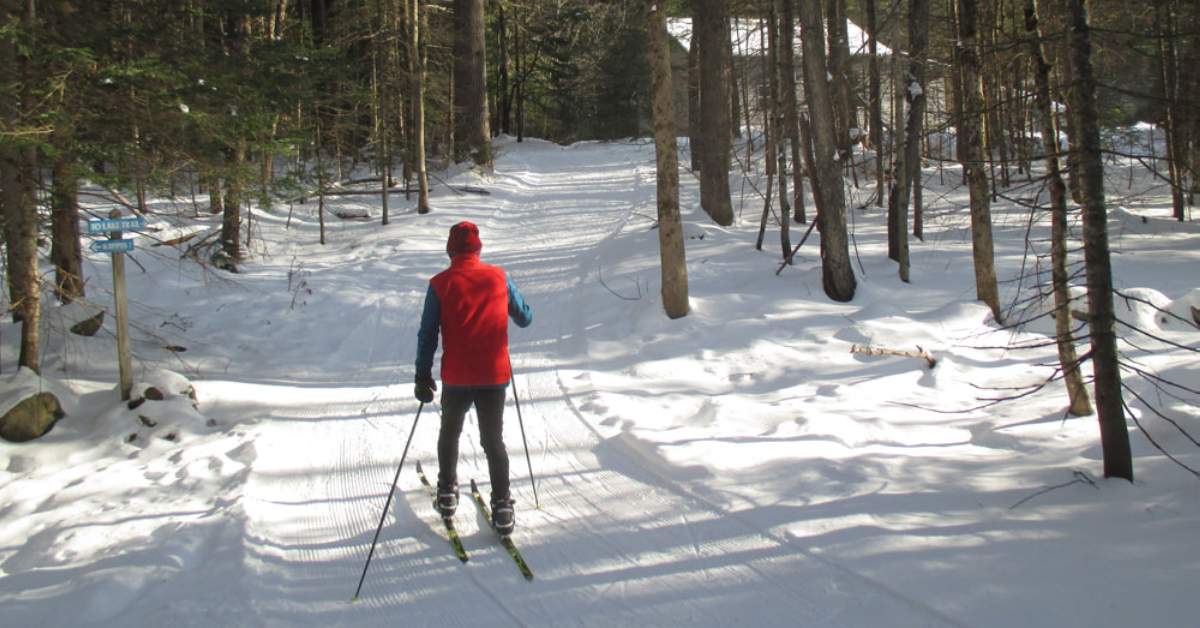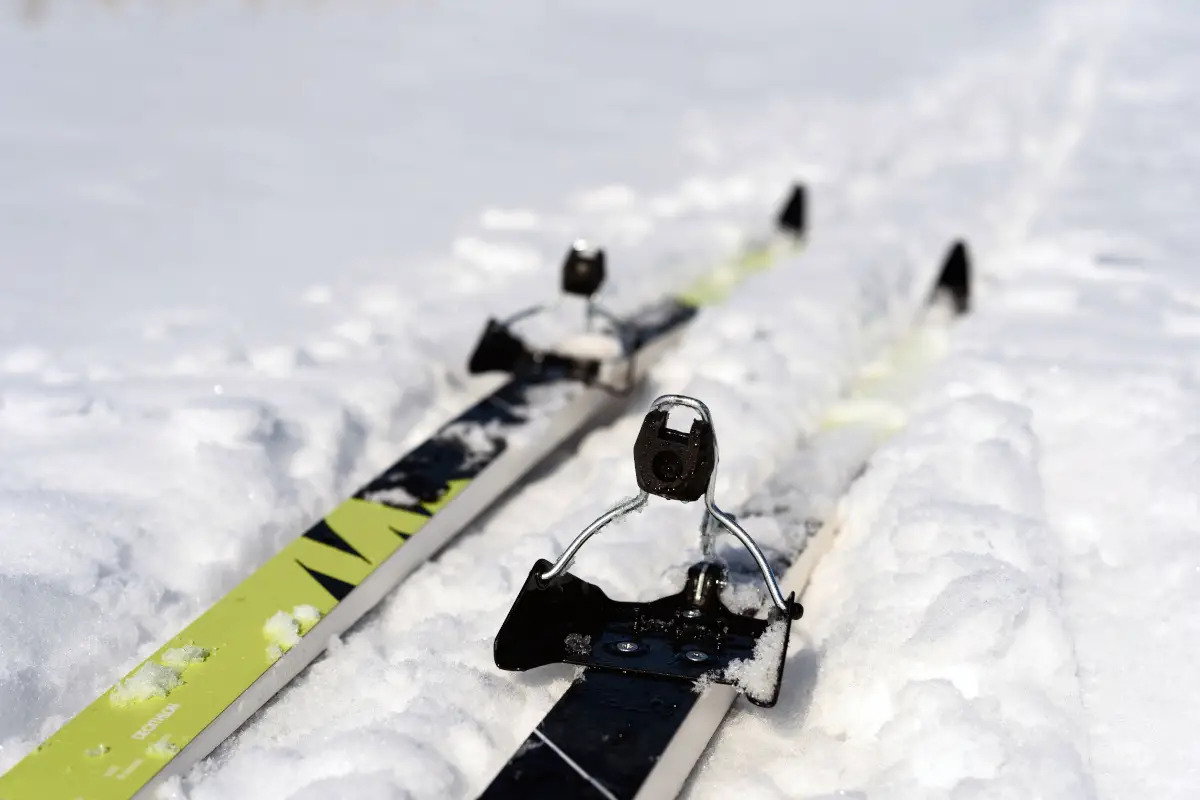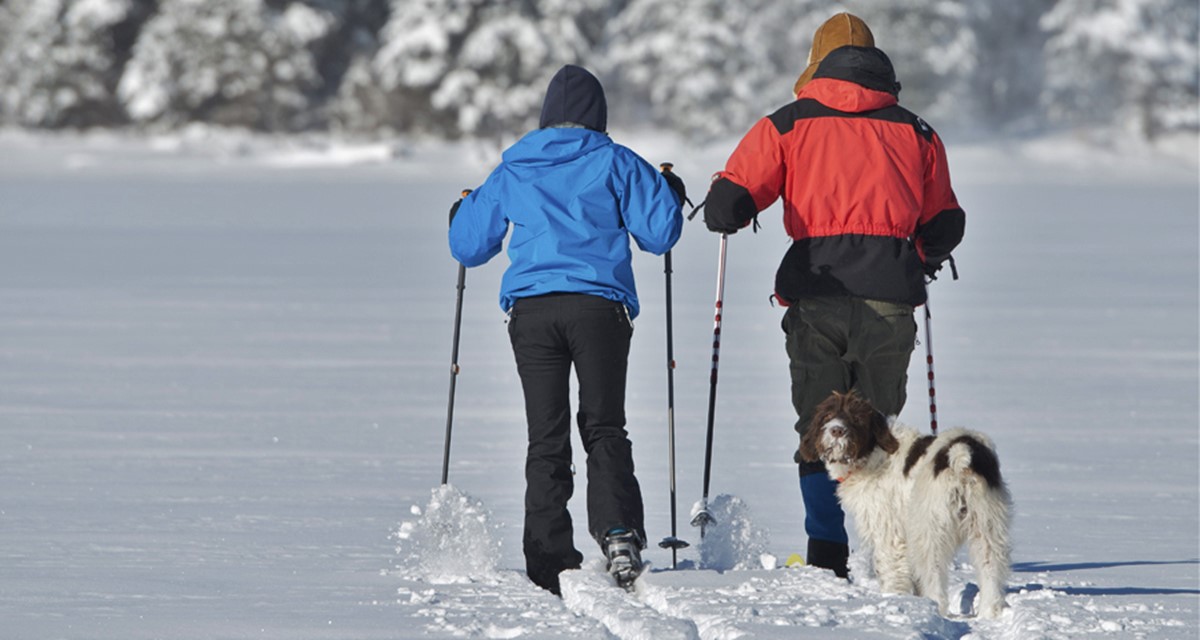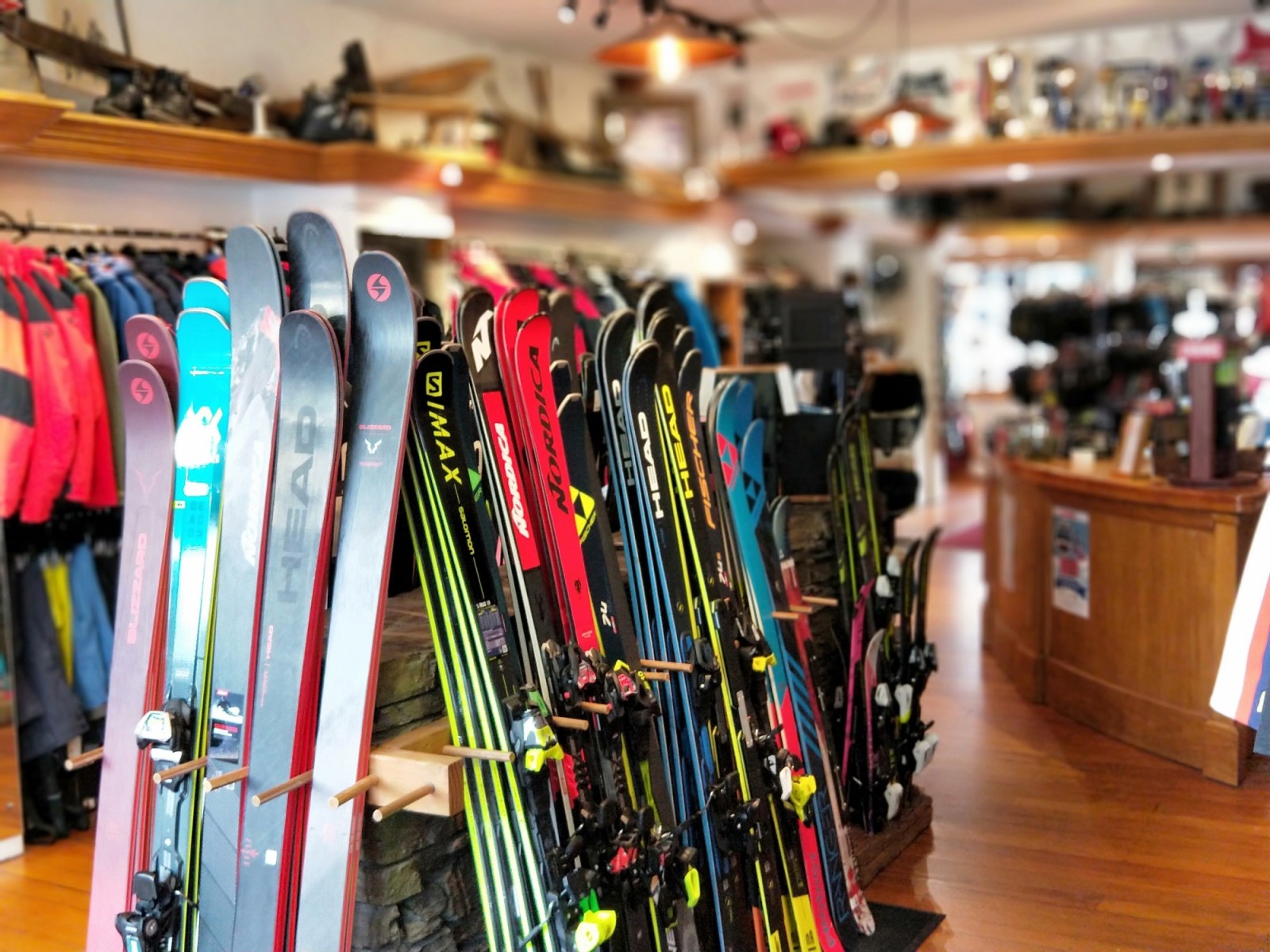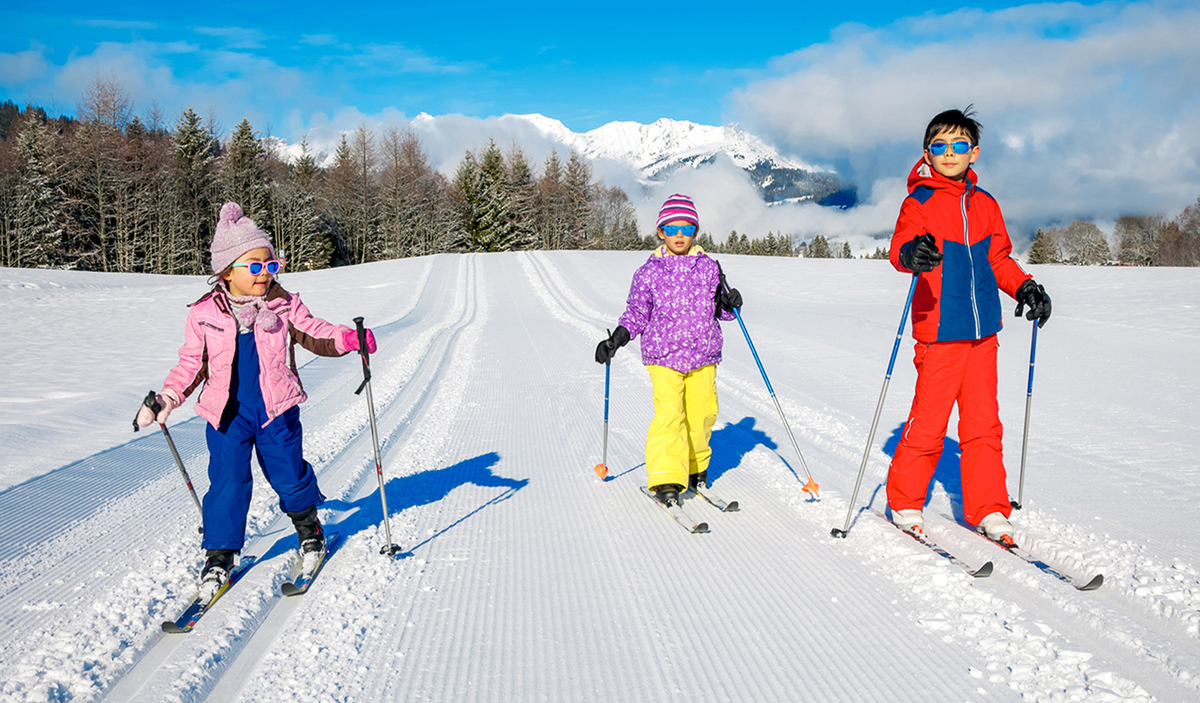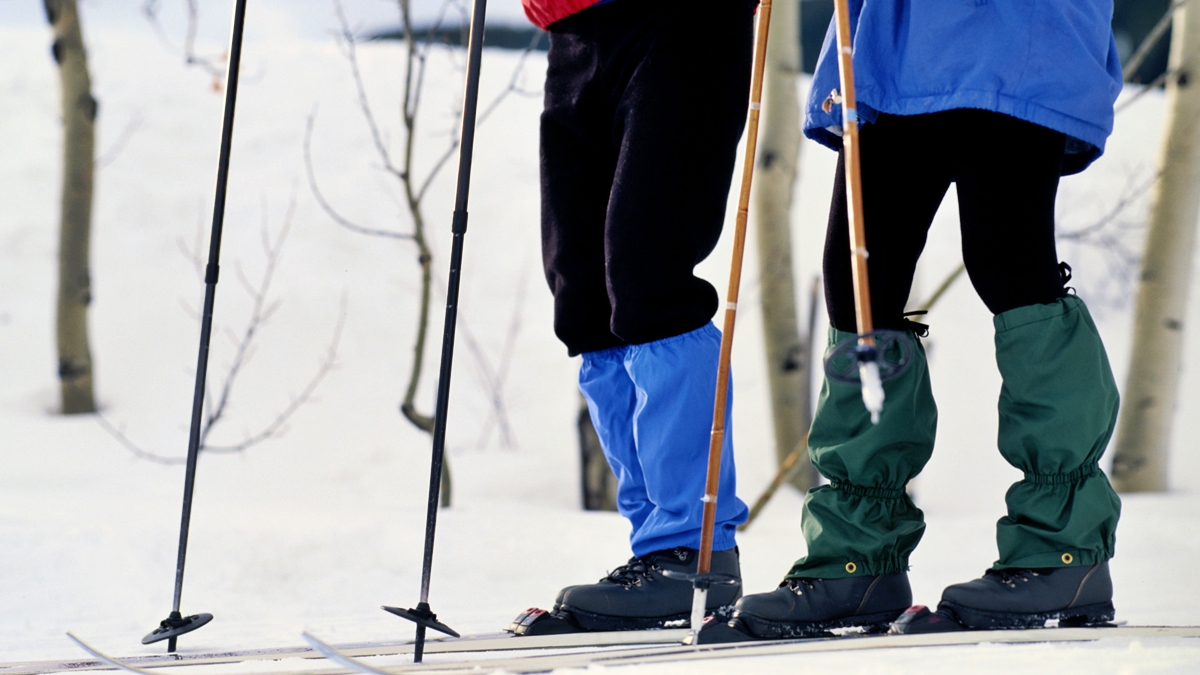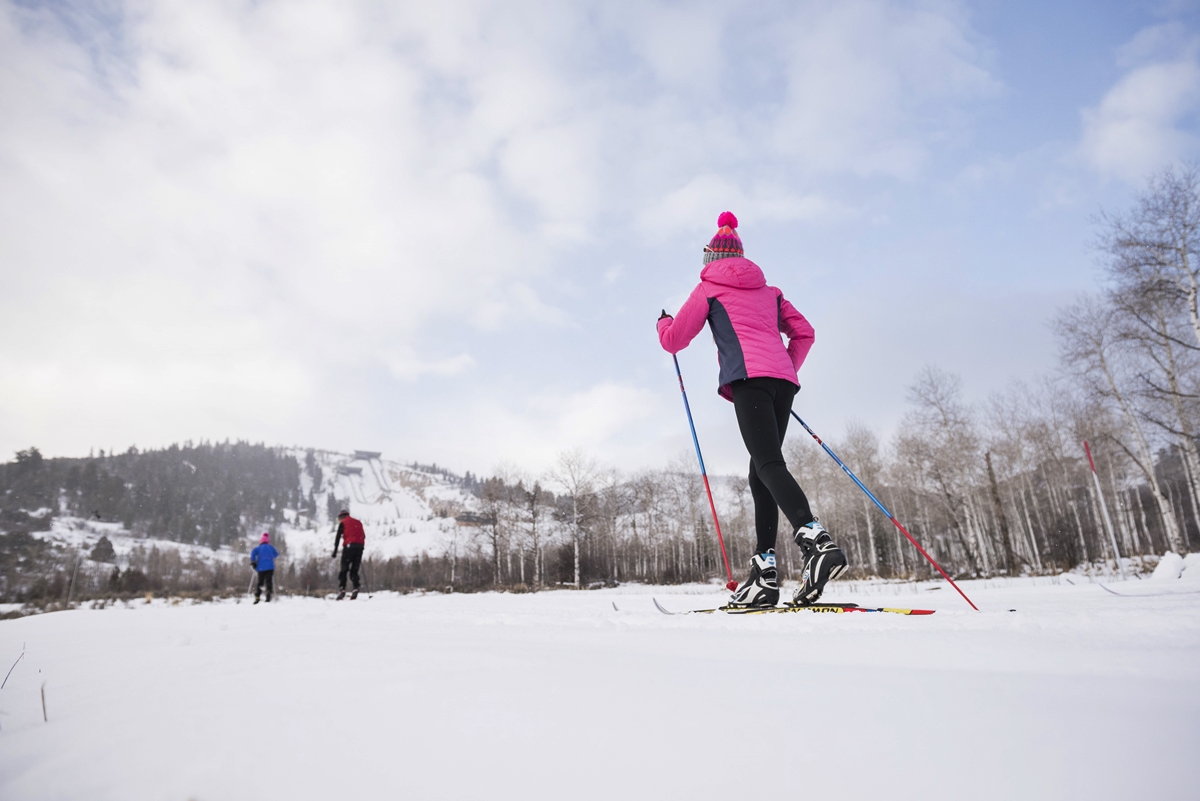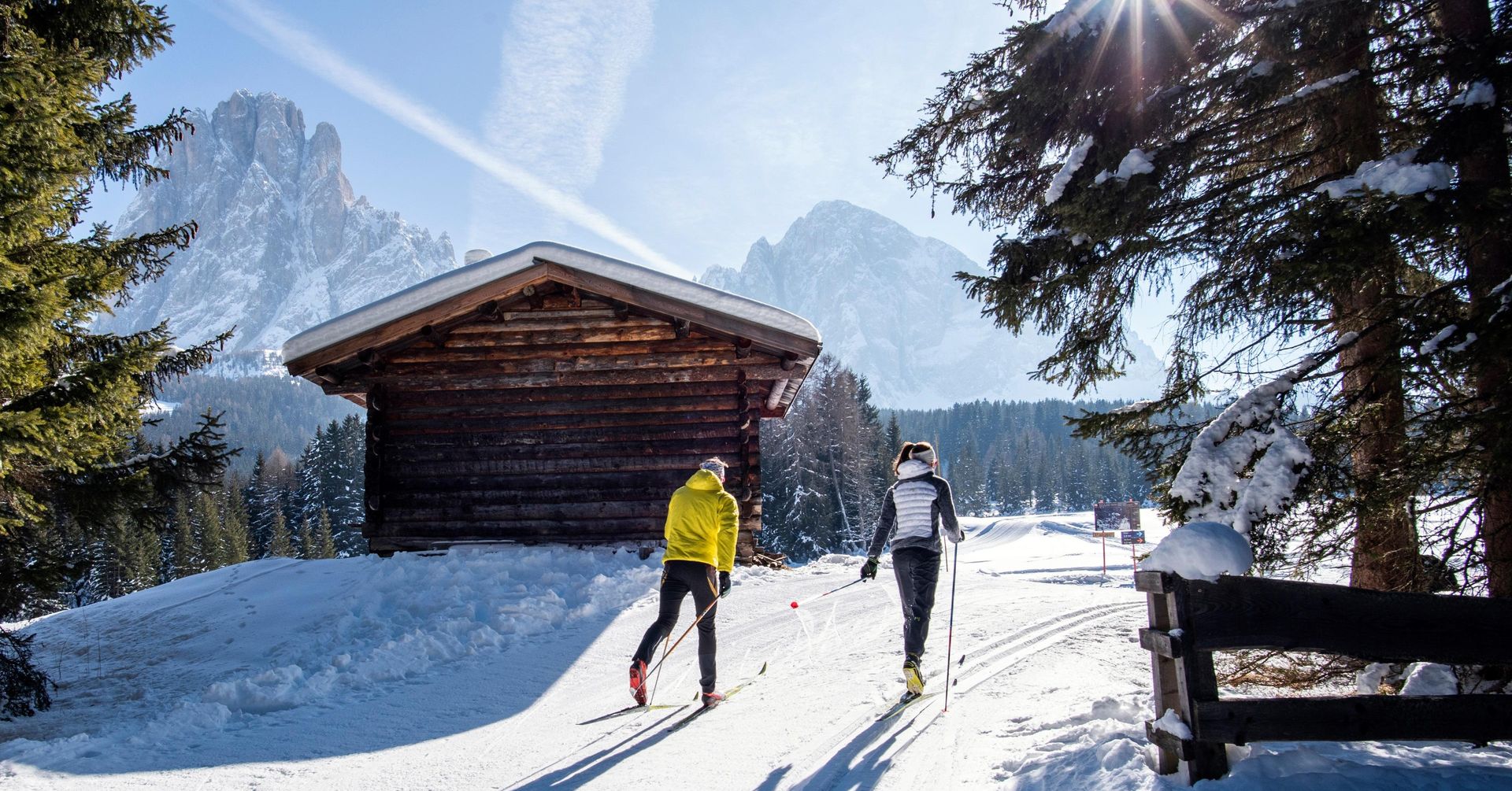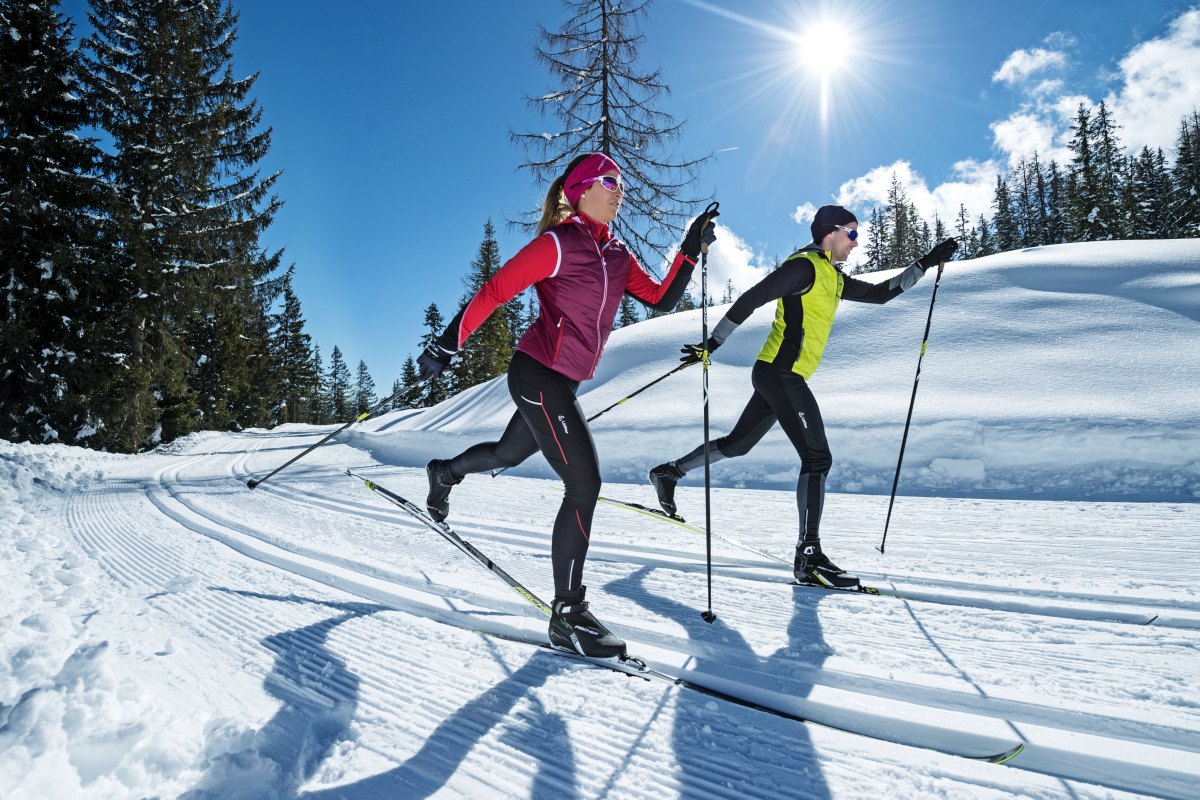

Featured
What Is Cross-Country Skiing
Modified: October 3, 2023
Discover the benefits of fast cross-country skiing with our featured guide. Boost your fitness, explore nature, and experience the exhilaration of gliding through snow-covered landscapes.
Introduction
Cross country skiing, also known as Nordic skiing, is a popular winter sport that combines adventure, cardiovascular fitness, and the beauty of the great outdoors. Whether you’re gliding through serene forests or racing against the clock, cross country skiing is a thrilling activity that appeals to both recreational enthusiasts and competitive athletes.
While cross country skiing is often associated with leisurely-paced journeys across snowy landscapes, there’s another aspect to the sport that brings out the thrill-seekers: fast cross country skiing. Fast cross country skiing is all about pushing yourself to the limits, achieving higher speeds, and competing in races to showcase your skills and endurance.
This article will delve into the world of fast cross country skiing, exploring its history, basic techniques, the importance of speed, training methods to improve speed, equipment used, and nutrition and hydration for optimal performance. By the end, you’ll have a comprehensive understanding of how to become faster in this exhilarating winter sport.
History of Cross Country Skiing
Cross country skiing has a rich history that dates back thousands of years, with evidence of early forms of the sport found in ancient rock carvings and cave paintings. In Scandinavia, the birthplace of cross country skiing, it was initially used as a means of transportation and hunting during the winter months.
Historically, in Nordic countries such as Norway, Sweden, and Finland, skiing served as an essential mode of transportation, allowing people to travel long distances across snowy terrains. As communities developed and modern transportation methods emerged, cross country skiing gradually transformed into a recreational activity and a competitive sport.
The sport gained recognition in the late 19th century when the first cross country ski races were organized. The Nordic Games, a precursor to the Winter Olympics, included cross country skiing as one of its events. In 1924, cross country skiing became an official sport in the Winter Olympics. Since then, it has continued to evolve and gain popularity as both a recreational activity and a competitive sport worldwide.
Today, cross country skiing offers various disciplines, including classic skiing, skate skiing, and ski touring. Classic skiing involves a technique where skiers propel themselves forward using a diagonal stride and kick, while skate skiing uses a skating-like motion to glide across the snow. Ski touring combines both skiing and mountaineering, allowing skiers to explore remote and untouched backcountry areas.
The sport has come a long way from its humble origins as a mode of transportation. Modern cross country skiing is a global phenomenon, with numerous international competitions, such as the FIS Nordic World Ski Championships and the Tour de Ski, attracting top athletes from around the world.
With its rich history and continued evolution, cross country skiing has firmly established itself as a beloved winter sport that offers both recreational enjoyment and thrilling competitive opportunities.
Basic Techniques in Cross Country Skiing
Learning the basic techniques of cross country skiing is essential for mastering the sport and enjoying a smooth and efficient glide on the snow. Here are the fundamental techniques that every cross country skier should learn:
- Diagonal Stride: Also known as the classic technique, the diagonal stride involves a coordinated movement of the arms and legs. Skiers push off the snow with one ski while gliding forward on the other, creating a diagonal motion. This technique is used on flat terrain and gentle ascents.
- Double Poling: Double poling is a technique primarily used on flat or slightly downhill sections. Skiers plant their poles simultaneously while propelling themselves forward using upper body strength. It’s a powerful technique that helps maintain speed and conserve energy.
- Skate skiing: Skate skiing is characterized by a dynamic side-to-side motion, simulating ice skating. Skiers use a V-shaped glide and transfer their weight back and forth between their skis. This technique is ideal for groomed trails and requires good balance and coordination.
- Snowplow: The snowplow technique is used for controlled descents and slowing down. Skiers create a wedge shape with their skis, pushing the inside edges of their skis outwards to create friction against the snow.
Mastering these basic techniques is crucial for developing efficiency, balance, and control in cross country skiing. It’s recommended to take lessons from a certified instructor or join a ski club to learn and practice these techniques under guidance.
Remember, mastering the basics is the foundation for progressing to more advanced techniques and allowing for faster skiing speeds. Practice regularly, focus on proper form, and gradually challenge yourself on more challenging terrain to improve your skills and become a faster cross country skier.
Importance of Speed in Cross Country Skiing
In cross country skiing, speed plays a vital role, whether you’re a recreational skier or a competitive athlete. Here are some reasons why speed is important in cross country skiing:
- Competitive Edge: In competitive cross country skiing, speed is crucial for securing victories and achieving top rankings. Races are often won or lost by a matter of seconds, so the ability to maintain high speeds throughout the course is paramount.
- Improved Fitness: Skiing at higher speeds engages more muscle groups and increases cardiovascular demands. As a result, striving for faster speeds during training sessions helps improve overall fitness levels, including endurance, strength, and agility.
- Efficiency and Technique: Skiing at higher speeds requires efficient technique and precise movements. By focusing on speed, skiers are encouraged to refine their techniques, minimize unnecessary movements, and find the most efficient ways to glide on the snow. This, in turn, improves overall performance.
- Time Efficiency: Faster speeds allow skiers to cover longer distances in a shorter amount of time. This can be especially beneficial for recreational skiers who want to explore more terrain or complete longer ski tours within a limited timeframe.
- Enhanced Enjoyment: Let’s face it, the exhilaration of gliding swiftly across the snow is one of the highlights of cross country skiing. Speed adds an element of excitement and adds to the enjoyment of the sport, making each ski outing more memorable and fulfilling.
While speed is important, it’s crucial to find a balance between speed and endurance. Pushing too hard for maximum speed without considering long-term sustainability can lead to fatigue and decreased performance. It’s essential to listen to your body, train intelligently, and gradually build endurance and speed over time.
Ultimately, speed in cross country skiing is a combination of fitness, technique, and mental focus. By incorporating speed-focused training sessions into your routine and honing your technique, you can elevate your skiing capabilities and enjoy the thrill of fast and graceful glides on the snow.
Factors Affecting Speed in Cross Country Skiing
Several factors come into play when it comes to achieving optimal speed in cross country skiing. Understanding and addressing these factors can significantly impact your performance on the snow. Here are the key factors that affect speed in cross country skiing:
- Technique: Proper technique is crucial for maximizing speed in cross country skiing. The efficient use of body movement, weight transfer, and pole planting allows skiers to glide smoothly and conserve energy. Working on technique through lessons and practice is essential for improving speed.
- Physical Fitness: Fitness level directly influences skiing speed. Elements such as cardiovascular endurance, muscular strength, and flexibility play a significant role. Engaging in regular cardiovascular and strength training exercises, along with cross training activities, can enhance physical fitness and ultimately improve speed.
- Ski Conditions: Ski conditions, such as the type and texture of the snow, can impact speed. Fresh, ungroomed snow tends to slow skiers down, while compacted and hard-packed surfaces provide faster gliding. Adapting technique and choosing the appropriate equipment for specific snow conditions can help maintain speed.
- Equipment: The choice of skis, bindings, and poles can impact speed in cross country skiing. Skis that are designed for faster gliding, with appropriate waxing or grip patterns, can provide an advantage. Lighter and stiffer poles enhance propulsion. Ensuring proper maintenance and choosing equipment suitable for your skill level and body type can contribute to increased speed.
- Aerodynamics: Aerodynamics, although less significant than in other sports, can still affect speed in cross country skiing. Body position, minimizing drag, wind resistance, and wearing appropriate clothing can all contribute to improved aerodynamics and increased speed.
- Weather and Altitude: Environmental factors such as wind, temperature, and altitude can impact speed. Headwinds and crosswinds can slow skiers down, while tailwinds can provide a speed boost. Cold temperatures and high altitude can also affect endurance and speed. Adapting strategies based on weather conditions and altitude is important for maintaining optimal speed.
Understanding these factors and how they influence speed in cross country skiing is essential for optimizing performance. By focusing on improving technique, maintaining physical fitness, selecting suitable equipment, and adjusting to varying ski conditions, you can enhance your speed and overall enjoyment of the sport.
Training Methods to Improve Speed in Cross Country Skiing
To enhance your speed in cross country skiing, it’s essential to incorporate targeted training methods into your routine. Here are some effective training techniques to help you improve your speed:
- Interval Training: Interval training involves alternating between high-intensity efforts and recovery periods. For example, you can ski at a near-maximum speed for a short distance or time, followed by a period of slower skiing to recover. This method helps improve cardiovascular fitness, muscular endurance, and increases your overall speed.
- Long-Distance Skiing: Endurance is crucial for maintaining a fast pace in cross country skiing. Incorporate longer ski outings into your training regimen to build endurance and improve your ability to sustain speed over longer distances. Gradually increase the duration and distance of your ski sessions to develop both physical and mental stamina.
- Strength Training: Strength training plays a vital role in improving speed and power on skis. Focus on exercises that target the lower body, such as squats, lunges, and hamstring curls, to enhance leg strength and explosiveness. Incorporating core and upper body exercises can also contribute to overall power and stability.
- Technique Drills: Devote time to practicing specific technique drills to improve efficiency and speed. Examples include one-legged skiing, diagonal stride on hills, and double poling intervals. By honing your technique in targeted drills, you can fine-tune your movements and increase your speed during regular skiing sessions.
- Hill Repeats: Find a hill with a moderate incline and perform hill repeats. Ski up the hill at a challenging but sustainable pace, focusing on maintaining a strong technique. Rest at the bottom or ski downhill to recover before repeating the ascent. Hill repeats improve power, climbing ability, and all-around speed.
- Flexibility and Mobility Work: Flexibility and mobility are vital for efficient movement on skis. Incorporate regular stretching and mobility exercises into your routine, focusing on areas such as hips, hamstrings, and shoulders. Improved flexibility can enhance range of motion, preventing injuries and allowing for a more powerful and efficient skiing stride.
Remember, consistency is key. Gradually increase the intensity and duration of your training sessions, allowing for proper recovery between workouts. It’s also beneficial to incorporate a mix of training activities, including skiing, strength training, and cross-training, to work on different aspects of fitness and prevent boredom.
Working with a certified cross country skiing coach or joining a ski club can provide guidance and personalized training plans to help you improve your speed effectively and safely.
Equipment Used in Fast Cross Country Skiing
When it comes to fast cross country skiing, having the right equipment is crucial. Here are the key pieces of equipment used in fast cross country skiing:
- Skis: Skis for fast cross country skiing are typically longer and narrower than those used for recreational skiing. They are designed to optimize gliding efficiency and speed. The choice of camber, which affects pressure distribution, and flex, which affects power transfer, depends on personal preference and skiing style.
- Bindings: Cross country ski bindings play a critical role in transferring power from the skier to the skis. They should offer stability, control, and a secure connection between the boots and skis. Racing bindings tend to be lighter and provide more direct energy transfer.
- Poles: Fast cross country skiing requires lightweight and stiff poles to maximize propulsion. High-quality carbon or composite material poles are popular among competitive skiers due to their lightweight and stiff characteristics.
- Boots: Boots for fast cross country skiing should provide a snug and comfortable fit, ensuring efficient power transfer and control. Racing boots are typically stiffer and lighter, allowing for better energy transfer and enhanced responsiveness.
- Glide Wax: Glide wax is applied to the base of the skis to reduce friction and improve gliding efficiency. For fast cross country skiing, specialized glide waxes are used, tailored to specific temperature ranges and snow conditions. Application techniques vary depending on the wax type and conditions.
- Grip Wax or Skins: Grip wax or skins are used when classic skiing to provide traction on uphill sections. Grip wax is applied to the grip zone of the skis, while skins are adhesive strips attached to the base. The choice between grip wax and skins depends on the snow conditions and personal preference.
- Clothing and Accessories: Fast cross country skiers opt for lightweight and breathable clothing that offers freedom of movement. Layering is essential to regulate body temperature during intense skiing. Additionally, accessories such as gloves, hats, goggles, and sunglasses provide protection and comfort.
It’s crucial to choose equipment that suits your skill level, skiing style, and the prevailing snow conditions. Consulting with knowledgeable professionals at ski shops or seeking advice from experienced skiers can help you select the most suitable equipment for fast cross country skiing.
Remember, proper maintenance of equipment is key to prolonging its lifespan and ensuring optimal performance. Regular ski maintenance, including waxing, edge tuning, and base repairs, is essential for maximum speed and durability.
Nutrition and Hydration for Optimal Performance in Cross Country Skiing
Nutrition and hydration are vital components for maximizing performance and endurance in cross country skiing. Proper fueling before, during, and after skiing sessions can significantly impact your speed and overall performance. Here are key considerations for nutrition and hydration in cross country skiing:
- Pre-Ski Fueling: Ensure you have a balanced meal or snack that includes carbohydrates, protein, and healthy fats before skiing. Carbohydrates provide the necessary energy, while protein helps with muscle repair and recovery. Examples include oatmeal with nuts and fruit, yogurt with granola, or a turkey and cheese sandwich.
- During-Ski Hydration: Staying hydrated is crucial for maintaining speed and endurance. Drink fluids regularly during skiing sessions, especially when skiing at high intensity and for longer durations. Carrying a water bottle or hydration pack is recommended. Sports drinks with electrolytes can also be beneficial for replenishing lost minerals.
- During-Ski Fueling: For longer ski sessions or races lasting more than an hour, consuming easily digestible carbohydrates is important to sustain energy levels. Options include energy gels, bars, or homemade snacks like fruit, trail mix, or energy bites. Experiment with different options during training to find what works best for you.
- Post-Ski Recovery: After skiing, prioritize recovery by consuming a balanced meal or snack rich in carbohydrates and protein. This helps replenish glycogen stores and aids in muscle recovery. Examples include a turkey wrap with veggies, a protein smoothie with fruit, or a bowl of quinoa with roasted vegetables and chicken.
- Overall Nutrition: Maintaining a well-balanced diet with a focus on nutrient-dense whole foods is essential for optimal performance. Base your meals on lean proteins, whole grains, fruits, vegetables, and healthy fats. Avoid excessive processed foods, sugary drinks, and alcohol that can hinder performance and recovery.
- Individualized Approach: Every skier has unique nutritional needs and preferences. Experiment and find what works best for you in terms of timing, portion sizes, and food choices. Consulting with a sports nutritionist can provide personalized guidance to optimize your nutrition plan.
Remember to listen to your body and adjust your nutrition and hydration strategies accordingly. Pay attention to signs of hunger, fatigue, and hydration levels during skiing sessions. Training in different weather conditions and adjusting fueling strategies accordingly can also help you adapt to varying requirements.
By prioritizing proper nutrition and hydration, you can enhance your energy levels, maintain speed, improve recovery, and ultimately elevate your performance in cross country skiing.
Common Mistakes to Avoid in Fast Cross Country Skiing
When it comes to fast cross country skiing, avoiding common mistakes can make a significant difference in your speed and overall performance. Here are some pitfalls to watch out for and prevent:
- Poor Technique: Technique is crucial for efficient and fast skiing. Failing to master proper technique can lead to wasted energy, inefficient gliding, and increased fatigue. Take the time to learn and practice correct technique, and consider working with a certified coach or instructor for guidance.
- Overstriding: Overstriding, or taking excessively long strides, may seem faster, but it often results in loss of balance and extra effort. Focus on maintaining a compact stride length and proper body positioning to maintain control and increase speed more effectively.
- Inadequate Preparation: Neglecting to properly warm up before skiing can hinder performance and increase the risk of injury. Take a few minutes to engage in dynamic stretches and mobilization exercises to prepare your muscles for the demands of fast skiing.
- Neglecting Strength Training: Focusing solely on skiing without incorporating strength training can limit your speed potential. Building strength in key muscle groups, especially the lower body and core, can enhance power, stability, and endurance on skis.
- Improper Waxing: Proper waxing is crucial for optimal glide and speed. Using the wrong wax or applying it incorrectly can hinder your performance. Educate yourself on appropriate waxing techniques and consult with experts or experienced skiers for advice on wax selection based on snow conditions.
- Inadequate Recovery: Pushing yourself too hard without allowing for proper recovery can lead to diminished performance and increased risk of injury. Make sure to incorporate rest days into your training schedule and prioritize sleep, proper nutrition, and self-care to aid in muscle repair and adaptation.
- Poor Equipment Maintenance: Neglecting to maintain your equipment, such as skis and bindings, can lead to decreased performance. Regularly waxing skis, keeping bindings clean and adjusted, and checking equipment for damage or wear are essential for optimal speed and safety.
- Ignoring Environmental Factors: Failing to adapt to changing weather and snow conditions can hinder your speed. Stay aware of factors such as wind direction, temperature fluctuations, and variations in snow texture, and adjust your technique and equipment choices accordingly.
- Underestimating Nutrition and Hydration: Proper fueling and hydration are key for maintaining speed and endurance. Failing to adequately fuel your body before, during, and after skiing can lead to a drop in energy levels and reduced performance. Make sure to have a well-rounded nutrition plan in place and stay hydrated throughout your skiing sessions.
Avoiding these common mistakes and focusing on proper technique, training, and preparation will help you make the most of your fast cross country skiing experiences. Continuously strive to improve, seek guidance when needed, and stay mindful of your body’s needs for optimal performance on the snow.
Conclusion
Fast cross country skiing offers an exhilarating and rewarding experience for both recreational enthusiasts and competitive athletes. By understanding the history, mastering basic techniques, and focusing on speed, you can enhance your performance on the snow. Factors such as technique, physical fitness, equipment, nutrition, and hydration all play crucial roles in achieving optimal speed and endurance.
As you explore the world of fast cross country skiing, remember to prioritize proper technique, focusing on efficient movements and maintaining balance. Regular training, incorporating interval sessions, long-distance skiing, strength exercises, and technique drills, will help you improve speed and overall performance.
Choosing the right equipment, including skis, bindings, poles, and appropriate waxing techniques, will enhance gliding efficiency and speed. Additionally, paying attention to nutrition and hydration, both for pre-ski fueling and during-ski replenishment, is essential for maintaining energy levels and sustaining speed over longer distances.
Avoiding common mistakes, such as poor technique, inadequate preparation, and neglecting recovery, will further contribute to your success in fast cross country skiing. By taking a holistic approach to training, focusing on both physical and mental aspects, you can enhance your performance and enjoy the thrill of skiing at higher speeds.
Remember that fast cross country skiing is a journey of continuous learning and improvement. Stay motivated, set goals, challenge yourself, and seek guidance when needed. With perseverance, dedication, and a focus on speed, you can elevate your skills and experience the pure joy and exhilaration of fast cross country skiing.
